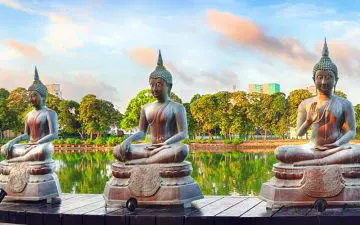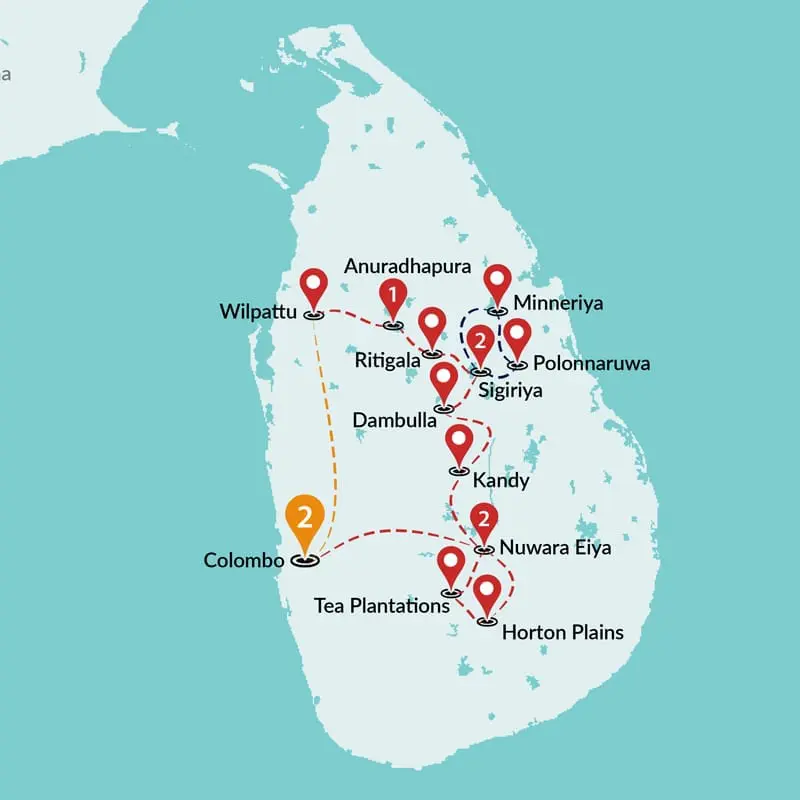Best Time To Visit Sri Lanka
The best time to visit Sri Lanka is from January to October when the weather in the Cultural Triangle and the tea country is pleasantly warm for sightseeing in the religious sites and vast national parks. The best of Sri Lanka is in the central hills region, where the weather is pleasant and mild throughout January to October, with occasional monsoon rains keeping the countryside blooming.
January to March and August are the driest times in Sri Lanka, offering the best weather for cultural activities and observing the wildlife. Since rainfall occurs occasionally, you may experience wet days anytime, but the clear skies are dominant throughout the season.
From June to August, the towns and cities of the central hills host various cultural and religious festivals. The countryside is blessed with dry weather and sunshine in August before the monsoon rains begin in September.
Why You Should Visit Sri Lanka: Sri Lanka, the tropical island nation in South Asia, is a traveler’s paradise waiting to be explored. This stunning destination offers a diverse range of attractions, from ancient historical sites and picturesque tea plantations to pristine beaches and wildlife reserves. The warm and friendly locals, delicious cuisine, and colorful festivals only add to the charm of this beautiful country. Whether you’re looking for an adventure-packed trip or a relaxing getaway, Sri Lanka has something for everyone, making it an ideal destination for your next holiday.
Things to Consider: Sri Lanka is a predominantly Buddhist country, and it’s important to respect the local customs and traditions. Dress modestly when visiting temples or religious sites. Mosquito-borne illnesses such as dengue fever and malaria are prevalent, so bring mosquito repellent and use it regularly. Sri Lanka has a good public transportation system, including buses and trains. Sri Lankan cuisine is diverse and delicious, but it’s important to be cautious when it comes to street food and tap water.
Monthly Travel Guide For Sri Lanka
Travelling in Sri Lanka in March and April
March to April is the best time to visit the attractions located in the central hills, such as Dambulla, Kandy, and Nuwara Eliya. The southwest region starts experiencing the monsoon rains, but the inland remains dry and pleasant. Temperatures vary between 20-30°C in the popular destinations of the Cultural Triangle.
The Tea Country is also perfect for visiting in the mild weather, although you should prepare for brief rain showers. April is a festive time in Sri Lanka, as locals celebrate the end of the harvest season.

Sri Lanka Climate & Weather Guide
| Region | Jan | Feb | Mar | Apr | May | Jun | Jul | Aug | Sep | Oct | Nov | Dec |
|---|---|---|---|---|---|---|---|---|---|---|---|---|
| Colombo | 30°C | 30°C | 31°C | 31°C | 30°C | 30°C | 29°C | 29°C | 29°C | 29°C | 29°C | 30°C |
| Anuradhapura | 29°C | 31°C | 33°C | 34°C | 33°C | 34°C | 33°C | 33°C | 33°C | 32°C | 30°C | 29°C |
| Sigiriya | 29°C | 31°C | 34°C | 35°C | 34°C | 34°C | 34°C | 34°C | 34°C | 33°C | 31°C | 29°C |
| Kandy | 28°C | 30°C | 31°C | 31°C | 30°C | 29°C | 29°C | 29°C | 30°C | 30°C | 28°C | 28°C |
| Nuwara Eliya | 25°C | 26°C | 28°C | 28°C | 27°C | 27°C | 27°C | 27°C | 27°C | 26°C | 25°C | 25°C |
| Polonnaruwa | 29°C | 31°C | 34°C | 35°C | 34°C | 34°C | 34°C | 34°C | 34°C | 33°C | 31°C | 29°C |
| Dambulla | 29°C | 31°C | 34°C | 35°C | 34°C | 34°C | 34°C | 34°C | 34°C | 33°C | 31°C | 29°C |
When to visit Sri Lanka
Visit the Central Hills of Sri Lanka from January to October
January to October is the best time to visit Sri Lanka for the ultimate cultural experience in the country’s central hills. The weather is pleasantly warm in the region, and there is plenty of sunshine in between occasional rains. The central hills host some of the most famous Buddhist and Hindu temples and ancient monasteries located in the mountains. The ideal weather conditions make it possible to enjoy these spiritual landmarks to the fullest.
The clear skies and weather offer the opportunity to trek to these spiritual landmarks and take your time breathing in the fresh air surrounded by the lush green forests. The markets and bazaars of Sri Lankan towns are also must-see places around this time, where you will get to experience the local culture. Our Splendours of Ceylon trip takes you to the cultural heartland of Sri Lanka and offers quality time exploring the spectacular Hill Country from January to October.
Tips for visiting Sri Lanka from January to October:
– The Central Hills experience a cooler climate than the rest of the country, so it’s important to pack warm clothing.
– The weather is generally drier and cooler from January to April, and wetter and warmer from May to October.
– Visit Kandy, Nuwara Eliya, and the Horton Plains National Park. The Central Hills are home to many attractions, including tea plantations, waterfalls, and ancient temples.
– Be sure to try some of the local specialties of Sri Lanka, such as hoppers, kottu, and string hoppers.
– Be respectful of the local customs and traditions, and dress modestly when visiting temples and other religious sites.
– Sri Lanka is generally a safe country to visit, but it’s always a good idea to take precautions.
Trips to Sri Lanka June to August
The best of Sri Lanka’s wildlife can be experienced in these months, as the changing water levels in the grassland habitats result in an increased animal activity. Safari trips in national parks such as Wilpattu and Minneriya are a highlight activity at this time of year. The dry season also hosts one of the most awe-inspiring natural spectacles in the world. From June to September, the largest gathering of Asian elephants takes place in the wildlife reservoir of Minneriya. The gathering of elephants is a must-see occasion for any Sri Lanka trip.
The festive cheer of Sri Lanka manifests itself from June to August as the country hosts travelers from around the world. Traditional and religious events such as the Esala festivals are held in cultural centers like Kandy, offering a chance to witness the Buddhist and Hindu practices. You can enjoy dance and acrobatic shows while tasting the local dishes. It is the best time to visit Sri Lanka for capturing the cities at their most vibrant in these months.
Tips for visiting Sri Lanka June to August :
– During the months of June to August, it’s best to focus on the central and northern parts of the country, where the weather is dry and pleasant.
– Sri Lanka has a range of accommodation options, from budget guesthouses to luxury resorts.
– The best way to get around Sri Lanka is by car or bus. Taxis and tuk-tuks are also available, but they can be more expensive.
Best things to do in Sri Lanka June to August :
– Explore the Hill Country: The Hill Country, including towns like Nuwara Eliya and Ella, has pleasant weather during the monsoon season.
– Visit the Cultural Triangle: The Cultural Triangle, which includes ancient cities like Anuradhapura and Polonnaruwa, has a rich history and culture.
– Experience the festivals: Sri Lanka has a range of festivals and celebrations during the monsoon season, including the Kandy Esala Perahera, one of the country’s biggest cultural festivals.
Sri Lanka FAQ
What’s the best time to visit Sri Lanka for budget travellers?
The best time to visit Sri Lanka for budget travelers is during the low season, which typically falls between May and September. During this time, prices for flights, accommodations, and activities are generally lower than during the high season. There are often discounts and special offers available for budget travelers during this time.
What is the rainiest month in Sri Lanka?
The rainy season in Sri Lanka varies depending on the region of the country. In general, the southwestern monsoon brings rain to the southwestern part of the island from May to September, while the northeastern monsoon brings rain to the northeastern part of the island from December to February.
For example, in Colombo and the western and southern coasts, the rainy season is from May to September. In contrast, in the northeastern part of the country, the heaviest rainfall is typically in December and January.
What is the best time to visit Sri Lanka for wildlife viewing?
The best time to visit Sri Lanka for wildlife viewing is during the dry season, which is generally from December to March. During this time, the vegetation is less dense, making it easier to spot animals in the national parks and reserves in Sri Lanka. The dry season is when animals tend to congregate around water sources, providing excellent opportunities for wildlife viewing.
When is the best time to visit Sri Lanka to avoid the crowds?
The peak tourist season in Sri Lanka is from December to March, which is the dry season and when the weather is most pleasant. During this time, popular tourist destinations can be quite crowded, and prices for accommodations and activities can be higher.
If you want to avoid the crowds, it is best to visit Sri Lanka during the off-season, which is from April to November. During this time, there are fewer tourists, and accommodations and activities may be more affordable. However, it’s important to note that the weather during the off-season can be more unpredictable.
Is it safe to travel to Sri Lanka during the monsoon season?
Traveling to Sri Lanka during the monsoon season can come with certain risks, such as heavy rain, flooding, landslides, and other weather-related hazards. However, it is still possible to travel to Sri Lanka during the monsoon season if you take appropriate precautions and plan your trip accordingly.
The monsoon season in Sri Lanka varies depending on the region of the country, with the southwestern monsoon typically occurring from May to September and the northeastern monsoon from December to February. It’s important to note that even during the monsoon season, it doesn’t necessarily rain every day, and rainfall can be sporadic.
Is it possible to visit Sri Lanka year-round?
Yes, it is possible to visit Sri Lanka year-round, but the best time to visit may vary depending on your interests and the specific regions you plan to visit.
Sri Lanka has a tropical climate with two monsoon seasons, which affect different parts of the island at different times. The southwest monsoon season runs from May to September, bringing rain to the west and south coasts, while the northeast monsoon season runs from October to January, affecting the east and northern regions of the island.
How many days do you need to visit Sri Lanka?
The number of days needed to visit Sri Lanka depends on the traveler’s interests and itinerary. Sri Lanka is a relatively small country, but it has a lot to offer, from ancient cities and temples to scenic landscapes and wildlife reserves. For a basic trip covering the main highlights of the country, a minimum of 5-7 days is recommended. This would include visits to places like Colombo, Kandy, Sigiriya, and Galle.
What is the coldest month in Sri Lanka?
Sri Lanka, being a tropical country, generally does not experience very cold temperatures. The temperature remains relatively constant throughout the year, with average temperatures ranging from 26-30°C (79-86°F) in most parts of the country.
That being said, the central hill region of Sri Lanka, including places like Nuwara Eliya and Ella, can get cooler due to the higher altitude. The coldest month in this region is typically January, with average temperatures ranging from 15-20°C (59-68°F) during the day and dropping to around 5-10°C (41-50°F) at night.
What are the best cities to visit in Sri Lanka?
Colombo – The vibrant capital city of Sri Lanka, known for its colonial architecture, museums, and shopping. Kandy – The cultural capital of Sri Lanka, home to the sacred Temple of the Tooth Relic and the picturesque Kandy Lake. Sigiriya – A UNESCO World Heritage Site, famous for its ancient rock fortress, stunning frescoes, and landscaped gardens. Anuradhapura – An ancient city with a rich history and some of the oldest and most impressive Buddhist temples and ruins in Sri Lanka. Polonnaruwa – Another ancient city with well-preserved ruins of temples and palaces, including the famous Gal Vihara. Nuwara Eliya – A scenic hill station in the central highlands of Sri Lanka, known for its tea plantations, cool climate, and British colonial architecture.
Is it safe to travel to Sri Lanka?
Sri Lanka is generally considered a safe destination for travelers. The country has made significant progress in terms of security and stability in recent years since the end of a long-running civil conflict. However, as with any travel destination, visitors should take basic safety precautions and be aware of their surroundings.
Petty crime, such as pickpocketing and theft, can occur in tourist areas, so it’s advisable to keep valuables secure and be cautious in crowded areas. Visitors should also be aware of scams and overcharging by some touts and vendors, especially in popular tourist spots.
What are the most beautiful places in Sri Lanka?
Sigiriya Rock Fortress – An ancient rock fortress with stunning frescoes, landscaped gardens, and panoramic views. Ella – A charming hill station with beautiful tea plantations, waterfalls, and hiking trails. Kandy – The cultural capital of Sri Lanka, famous for the sacred Temple of the Tooth Relic, Kandy Lake, and the lush Peradeniya Botanical Gardens. Nuwara Eliya – A picturesque hill station with lush tea plantations, colonial-era bungalows, and breathtaking mountain views. These are just a few of the many beautiful places to visit in Sri Lanka.
Does Sri Lanka have nightlife?
Yes, Sri Lanka does have nightlife, especially in the major cities such as Colombo, Kandy, and Galle. There are many bars, nightclubs, and entertainment venues where visitors can enjoy a night out. In Colombo, for example, there are several popular nightlife areas such as Colombo 07, Bambalapitiya, and Havelock Town. Many of the bars and nightclubs in Sri Lanka are located in hotels, which often feature live music, DJs, and themed events.
Which airlines fly directly into Sri Lanka?
Several airlines operate direct flights to Sri Lanka from different parts of the world. Some of the airlines that fly directly into Sri Lanka include: SriLankan Airlines, Emirates, Qatar Airways, Etihad Airways, Singapore Airlines, Air India, Turkish Airlines.
What to wear in Sri Lanka?
It’s best to wear lightweight and breathable clothes made from natural fibers such as cotton or linen. Avoid synthetic fabrics that can trap heat and moisture. Sri Lanka is a predominantly Buddhist country, and it’s important to dress modestly when visiting temples and other religious sites. Shorts, tank tops, and revealing clothing should be avoided in such places. Sri Lanka can get quite hot and sunny, so it’s important to protect your skin and eyes from the sun. Wear a hat, sunglasses, and apply sunscreen regularly.
What is Sri Lanka famous for?
Sri Lanka has a rich Buddhist heritage, with many ancient temples and ruins scattered across the country. Sri Lanka is one of the world’s largest tea producers, known for its high-quality Ceylon tea. With its long coastline, Sri Lanka has many stunning beaches, with crystal clear waters and white sand. Sri Lanka is home to many unique and rare species of wildlife, including elephants, leopards, and a variety of bird species. Sri Lanka is known for its flavorful cuisine, with a variety of spices and ingredients used in dishes such as curry and rice. Sri Lanka is a popular destination for those seeking Ayurvedic treatments and wellness programs.
What is the best time to eat delicious food in Sri Lanka?
In terms of the best time of year to enjoy Sri Lankan cuisine, it’s worth noting that Sri Lanka has a tropical climate with two monsoon seasons. The southwest monsoon brings rain from May to September, while the northeast monsoon brings rain from December to February. The drier months from December to March and July to August are a great time to explore the country and enjoy the local cuisine without having to worry about heavy rainfal
Do you need a visa to visit Sri Lanka?
Yes, most visitors to Sri Lanka need a visa to enter the country. There are several types of visas available depending on the purpose and length of your visit, including tourist visas, business visas, and transit visas.
Tourists can obtain a visa online through the Electronic Travel Authorization (ETA) system, which is a simple and straightforward process. The ETA is valid for 30 days and can be extended up to 180 days. It’s always a good idea to check with your embassy or the Sri Lankan embassy in your home country to ensure that you have the correct visa requirements for your trip.
Sri Lanka by Season

Winter
Sri Lanka is a tropical paradise that offers a diverse range of attractions and experiences, making it an ideal destination for travelers seeking an exotic winter getaway.
Whether it’s hiking through the lush forests of the Knuckles Mountain Range or indulging in a spicy curry at a street-side cafe, Sri Lanka is sure to captivate.
Best Things to do in Sri Lanka in winter:
Visit places like Sigiriya, Polonnaruwa, and Anuradhapura. Enjoy a thousand lights in Duruthu Perahera in Colombo.

Spring
During spring, the weather is warm and sunny, making it the perfect time to explore the country’s many attractions. From hiking in the tea plantations to surfing in the azure waters, there’s something for everyone in Sri Lanka.
An excellent time to visit the wildlife reserves in Sri Lanka, such as Yala National Park and Wilpattu National Park, as it is the ideal time to spot leopards, elephants, and other wildlife in their natural habitats.
Best Things to do in Sri Lanka in spring:
Celebrate Sinhala and Tamil New Year like a local. Watch hot air balloons in Dambulla. Engage in entertainment activities in the cities during the colorful Vesak Poya.

Summer
Sri Lanka is famous for its tea, and summer is one of the best times to take tours of the many tea plantations in the central highlands. The cool, misty climate of the highlands provides a refreshing break from the heat and humidity of the coast.
During the summer months, many of Sri Lanka’s national parks and wildlife reserves are open and accessible, making it a great time to see the country’s diverse wildlife.
Best Things to do in Sri Lanka in summer:
Trek through the scenic hills and tea plantations in Nuwara Eliya, or hike to the top of Knuckles Mountain Range. Attend the Poson Festival.

Autumn
The fall season in Sri Lanka brings beautiful landscapes, with lush greenery and colorful flora. This is a great time to explore Sri Lanka’s stunning countryside, including its tea plantations, waterfalls, and national parks.
Best Things to do in Sri Lanka in autumn:
Go on safaris to see elephants, leopards, birds, and other animals in their natural habitats. Trek through the scenic hills and tea plantations in Ella, or hike to the top of Adam’s Peak for a stunning sunrise view.
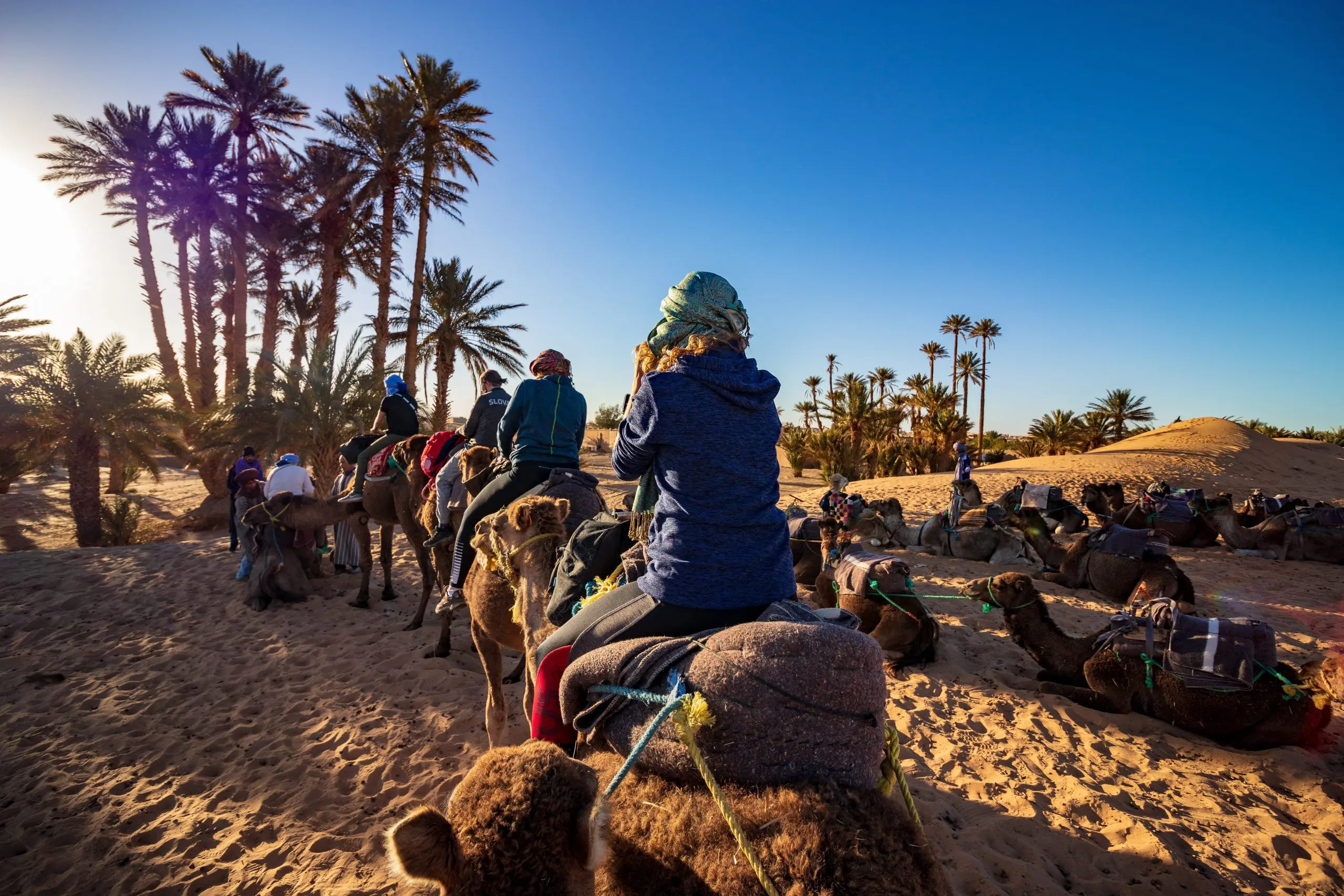 February Sale; 2 For 1
February Sale; 2 For 1  Croatia Sailing : 2 For 1
Croatia Sailing : 2 For 1 Asia Tours : 2 For 1
Asia Tours : 2 For 1 Central & Eastern Europe Tours: 2 For 1
Central & Eastern Europe Tours: 2 For 1  Why Travel Talk
Why Travel Talk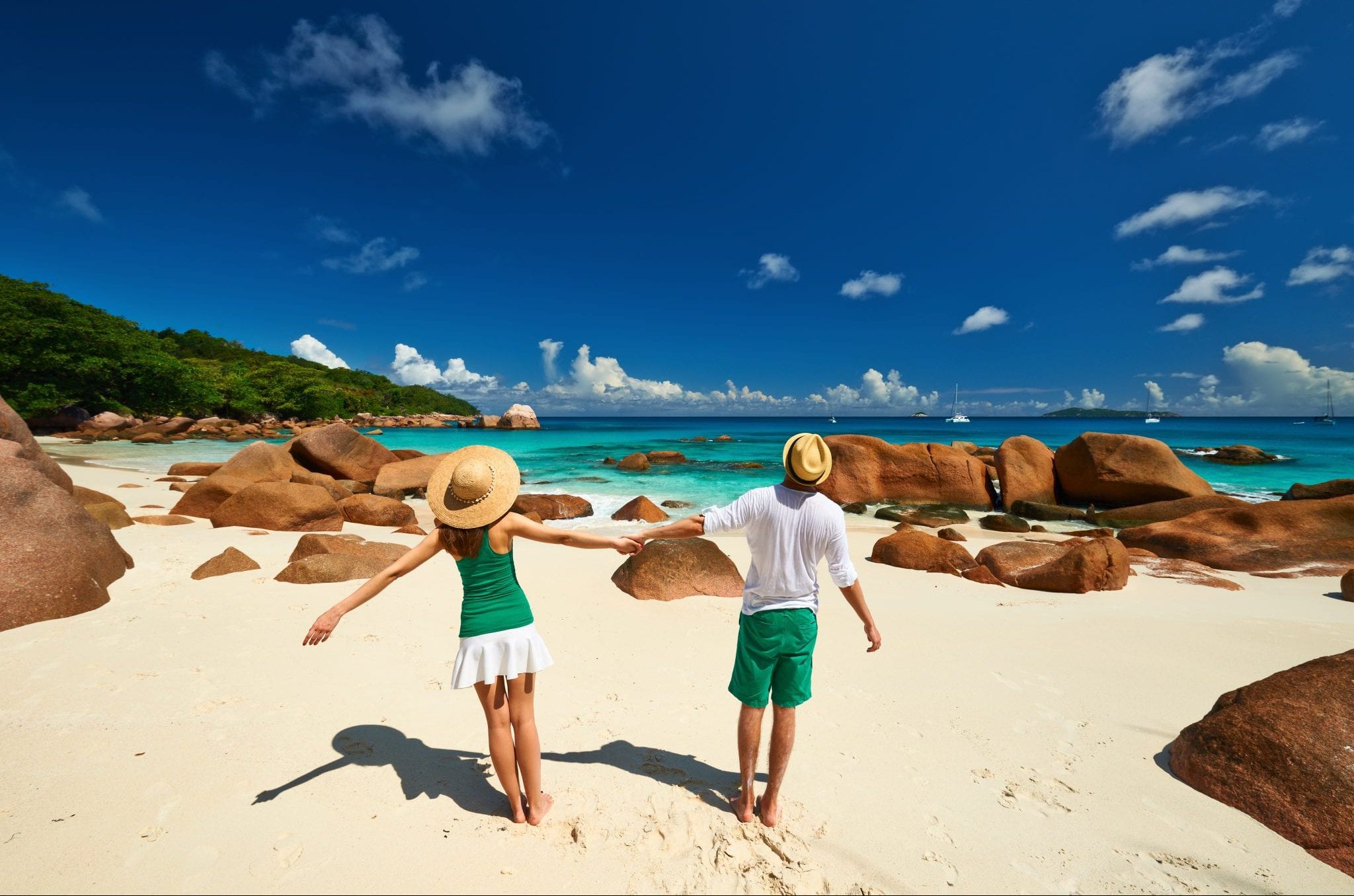 Travel Talk Blog
Travel Talk Blog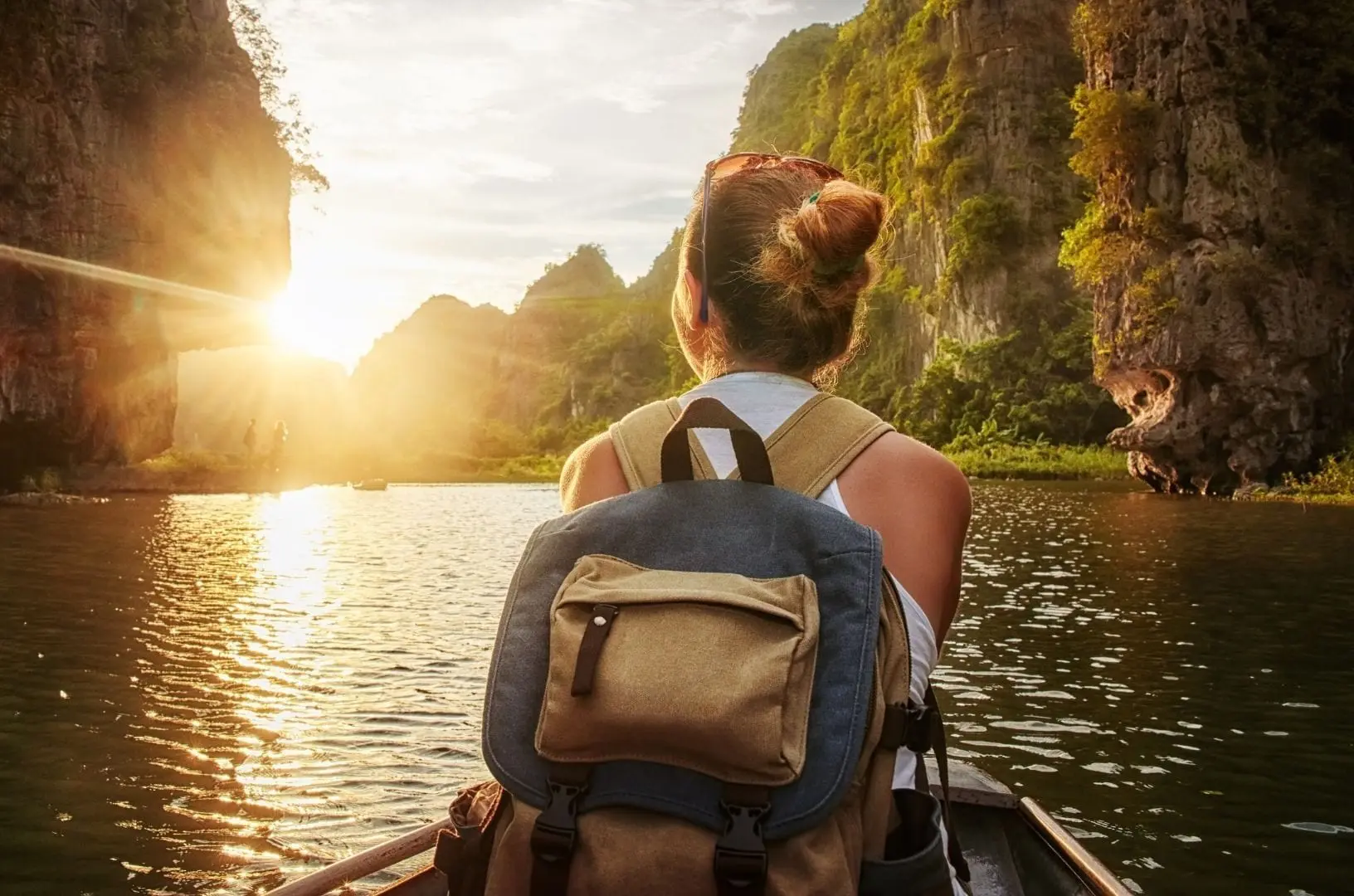 Responsible Travel
Responsible Travel Fair Travels with Travel Talk
Fair Travels with Travel Talk





